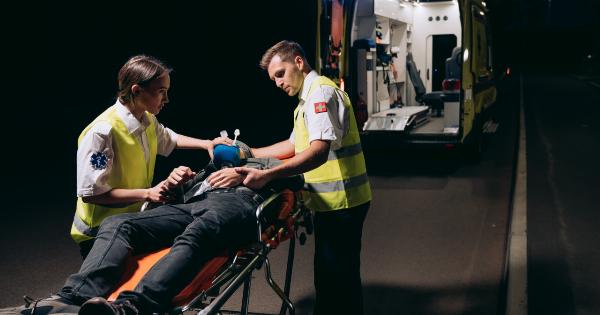World Congenital Heart Disease Day is an important annual event that aims to raise awareness about congenital heart defects and the challenges faced by individuals living with this condition.
It is observed on February 14th each year, and is an opportunity for people to come together, support one another, and celebrate the resilience and strength of those affected by congenital heart disease.
Understanding Congenital Heart Disease
Congenital heart disease is a term used to describe a range of structural defects in the heart that are present from birth. These defects can affect the heart’s chambers, valves, or blood vessels, leading to various complications.
Some common examples of congenital heart defects include atrial septal defect, ventricular septal defect, and tetralogy of Fallot.
Living with congenital heart disease can be challenging, as it often requires ongoing medical care, lifestyle adjustments, and support from healthcare professionals.
This is where physical therapists play a crucial role in helping individuals with congenital heart disease lead fulfilling lives.
The Role of Physical Therapists
Physical therapists specialize in restoring and maintaining optimal physical function and mobility. They work with individuals of all ages and can provide valuable assistance to those with congenital heart disease.
Here are some ways physical therapists can help:.
1. Cardiac Rehabilitation
Physical therapists play a crucial role in cardiac rehabilitation programs. These programs are designed to help individuals recover and regain their strength after heart surgery or other cardiac interventions.
Through personalized exercise programs and monitoring, physical therapists ensure that patients gradually increase their activity levels while maintaining their safety.
2. Exercise Prescription and Training
Physical therapists are experts in prescribing appropriate exercises based on individual needs and limitations.
They can design a tailored exercise program for individuals with congenital heart disease, taking into account their specific conditions and goals. Regular exercise can improve cardiovascular health, endurance, and overall well-being.
3. Education and Lifestyle Guidance
Physical therapists provide education and guidance on maintaining a healthy lifestyle. They can give advice on nutrition, weight management, and stress management, all of which play a vital role in managing congenital heart disease.
By equipping individuals with the knowledge and tools to make informed decisions, physical therapists empower them to take charge of their health.
4. Pain Management
Living with congenital heart disease can sometimes be associated with discomfort or pain.
Physical therapists can use various therapeutic techniques, such as manual therapy and modalities like heat or cold therapy, to help alleviate pain and improve overall comfort.
5. Posture and Body Mechanics
Proper posture and body mechanics are important for individuals with congenital heart disease, as they can help reduce strain on the heart and improve overall functioning.
Physical therapists can provide guidance on maintaining good posture and body mechanics during daily activities, such as sitting, standing, and lifting.
6. Breathing Exercises
Certain congenital heart defects may affect lung function and breathing patterns. Physical therapists can teach breathing exercises and techniques to optimize lung capacity and promote efficient breathing.
These exercises can help manage symptoms and improve overall respiratory function.
7. Psychological Support
Living with a chronic condition like congenital heart disease can take a toll on mental health. Physical therapists often work as part of a multidisciplinary team and can provide emotional support and counseling to individuals and their families.
They can help individuals develop coping mechanisms, improve self-esteem, and address any psychological challenges associated with their condition.
8. Monitoring and Progress Evaluation
Physical therapists closely monitor the progress of individuals with congenital heart disease, measuring various physical parameters and assessing functional abilities.
This allows them to track improvement, make necessary adjustments to treatment plans, and ensure that individuals are achieving their rehabilitation and health goals.
9. Prevention and Risk Reduction
Physical therapists can educate individuals with congenital heart disease about potential risks and preventive measures to minimize complications.
They can advise on lifestyle modifications, symptom recognition, and strategies to reduce the risk of cardiac events.
10. Adaptive Equipment and Assistive Devices
In some cases, individuals with congenital heart disease may benefit from the use of adaptive equipment or assistive devices to facilitate movement and enhance independence.
Physical therapists can evaluate, recommend, and teach individuals how to use such tools effectively.
Celebrating World Congenital Heart Disease Day
On World Congenital Heart Disease Day, it is essential to recognize the achievements and resilience of individuals living with congenital heart disease. Here are some ways to celebrate and show support:.
1. Wear Red
Red is the international color representing awareness for congenital heart disease. Wear something red to show your support and solidarity.
2. Share Information
Spread awareness by sharing accurate and reliable information about congenital heart disease on social media platforms, personal blogs, or through educational materials.
3. Organize Events
Host or participate in events that raise funds, promote awareness, or provide support to individuals with congenital heart disease and their families.
4. Volunteer
Offer your time and skills by volunteering at local hospitals, cardiac rehabilitation centers, or organizations that support individuals with congenital heart disease.
5. Fundraise
Raise funds for research, treatment, and support programs for individuals affected by congenital heart disease. Organize fundraising events, awareness walks, or online campaigns.
6. Connect with Support Groups
Join online support groups or connect with local support networks to gain support, share experiences, and learn from others who are living with or caring for someone with congenital heart disease.
7. Educate Others
Take the opportunity to educate others about congenital heart disease. Spread awareness and dispel misconceptions by sharing your knowledge and personal experiences.
8. Support Research
Donate to research organizations dedicated to improving the understanding, prevention, and treatment of congenital heart disease.
9. Advocate for Change
Use your voice to advocate for policies that support access to quality healthcare, research funding, and increased public awareness of congenital heart disease.
10. Celebrate Life
Above all, World Congenital Heart Disease Day is a celebration of life. Take a moment to appreciate the strength, courage, and resilience of individuals living with congenital heart disease.





























